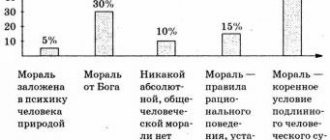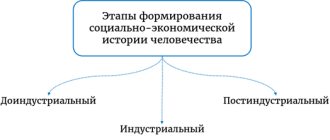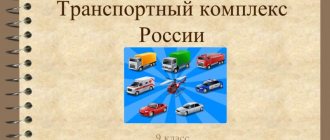Lesson on the topic "Atmosphere" 6th grade.
Summary of an open lesson on geography in 6th grade.
Lesson topic: “Atmosphere.”
Lesson type: lesson on learning new knowledge.
UMK: (textbook) Lobzhanidze A.A. "Geography. Nature of the Earth. 6th grade"
Methods: verbal, visual, reproductive, search and research.
Technologies: ICT when studying new material, problem-based dialogue.
Forms of work: individual, pair, frontal.
Interdisciplinary connections: literature, mathematics, chemistry, natural history.
Equipment: interactive whiteboard, electronic textbook supplement, atlases.
Goal: 1) to form a concept of the atmosphere as an outer gas shell, its composition and structure; about the processes occurring in atmospheric layers.
2) form the concept of the troposphere, the most important part of the atmosphere for life;
3) show the relationship of the atmosphere with the earth’s crust and hydrosphere.
Planned results:
Subject: developing an idea of the meaning of the atmosphere, its structure, the distinctive features of its layers;
— factors affecting air temperature;
— apply the acquired knowledge to explain the processes occurring in the atmosphere.
Meta-subject: development of monologue, dialogic speech;
— developing the ability to perceive, process and present information in various forms;
- highlight the main points, find answers to questions;
— identify cause-and-effect relationships and create logical chains;
— classify information according to specified criteria;
— compare objects and phenomena according to given criteria;
- solve problematic problems;
— analyze the dependency between the components of an object.
Personal: continue to form a holistic worldview;
— formation of students’ readiness and ability for self-development and self-education based on motivation for learning and knowledge;
- education of tolerance.
Lesson structure.
Motivational – target stage (7 min.)
The coordinates of geographical objects are written on the board. Working in pairs using the atlas (pp. 6-7), identify them. Remember interesting information about these objects.
1) 5° N 62°W 3) 55° N 107°E Answers: 1) vdp. Angel
2) 33° S 70°W 4) 4° S 37°E 2) Aconcagua
3) lake Baikal
4) volk. Kilimanjaro
What earthly shells do these objects belong to? Define these shells.
ICT. Electronic supplement to the textbook. We read a fragment of the story “Nils’s Flight with the Wild Geese.” Questions after reading: 1) Why did the troll freeze?
2) In what earthly shell did he build his house?
Today you can find out at what height you need to build a house so that the temperature does not drop below zero degrees.
In this lesson we will get acquainted with the third shell of the earth - the atmosphere.
What do you know about her? (student answers)
Open the textbook (pages 102-103). We read in the window what we learn about this shell. These are the goals of our lesson.
Approximate stage (10 min.)
ICT Look at the screen. This is how astronauts see our atmosphere (4 slides). What did you notice?
If the atmosphere is a shell of air, then what does it consist of? Air is a mixture of gases.
ICT. Look at the diagram. What is indicated on it? (gas composition).
List the gas composition of the atmosphere and its percentage.
What do you know about nitrogen? (lifeless gas, does not support respiration and combustion. A-negation, zot-life)
Oxygen – supports respiration and combustion. Essential for living organisms. You cannot breathe pure oxygen, poisoning occurs. It exists in the atmosphere in two states - oxygen and ozone.
Argon is a low-active gas; these are called inert. It is used in luminous advertising signs. It has a cold blue glow (tube, electric discharge, glow)
Carbon dioxide is necessary for plant photosynthesis.
What else, besides gases, can be in the atmosphere? (dust, ash, pollen, sea salt, water vapor).
Is it only on Earth that there is an atmosphere? (If you have difficulty answering, show in the electronic appendix a comparative table for the planets of the solar system) Why does life exist only on Earth
?
What is the importance of the atmosphere for life on Earth?
We examined the first goal of our lesson - the gas composition of the atmosphere.
Exercise for the eyes.
Search and research stage (10 min).
Let's move on to studying the structure of the atmosphere.
Look at the structure diagram yourself in the textbook. What layers did you learn about?
Troposphere - from Greek. turn.
stratosphere - layer. flooring.
ICT. Look at the slide (in the electronic Appendix there is a slider. Temperature change).
What did you notice? Why does temperature decrease with height? (the atmosphere heats up from the earth's surface).
Practical stage (10 min.)
There are tables on your tables. The names of the layers are located from bottom to top, as in your drawings. Look at the column layers of the atmosphere. Is it possible to infer its properties from the name of a layer?
Now, using the textbook and the knowledge gained, fill out the table, which is the Logbook. We work according to options: option 1 – about the troposphere, option 2 – about the stratosphere. What type of transport will you use to study the troposphere (by plane), stratosphere (by balloon)?
| Layers of the atmosphere | What height does it start from? | Features (occurring phenomena) | Temperature change with altitude |
| 3. Exosphere (dispersion) | |||
| 2. Thermosphere (heat region) | |||
| 1. Mesosphere (middle) Upper atmosphere: | |||
| Stratosphere (flooring, layer) | |||
| Troposphere (from Greek - change, turn) | |||
When checking the work, another option records information.(2 ratings). The teacher, in the form of a presentation, shows the correctness of filling out the table. The upper layers of the atmosphere are analyzed orally by the teacher. We examined the second goal of our lesson - the composition of the atmosphere.
Can you now answer the question about the troll's house? At what height should he build his house?
Let's assume that the surface is + 18 degrees. After how many meters will there be a negative temperature? (at an altitude of 3 km - 3000 m there will be a negative temperature).
Reflective-evaluative stage (3 min.)
We talked in class about a very important shell. On the back of the table, write a letter that begins “I thank the atmosphere for...” Checking the work (1 mark).
Homework: 1) work with the test - simulator in email. Application.
2) for those who do not have such an opportunity, write in a notebook about how the atmosphere is studied.
Reserve°
Game “What is this number?” Frontal view.
1000 km 18 km -80°
78% 21% 50 -55 km
6° 8km 20-25 km
Solve problems.
1) What is the air temperature outside an airplane flying at an altitude of 5 km, if at the earth’s surface it is + 18°?
2) What is the air temperature at the Earth’s surface if at an altitude of 4 km it is - 10°?
Self-analysis of the lesson.
This lesson is the first in the section “Atmosphere - the air envelope of the Earth”, 44 in the 6th grade course. The lesson builds on subsequent lessons, expanding students' horizons, promoting the development of communication skills and practical research skills.
The class consists of 25 people. All successful. There are excellent students, more students studying at “4” and “5”. The class is active and requires supervision from the teacher. Assumes constant employment in a variety of activities.
Sufficient time was devoted to updating knowledge and checking understanding of what was learned. There is a connection between the stages of the lesson.
The emphasis in the lesson was on basic concepts - atmosphere, gas composition, atmospheric envelopes. Construction of a logical connection: heating of the earth's surface - decrease in temperature with height - absorption of solar radiation - increase in temperature. From everything that was told, she highlighted the main thing, using questions she led the children to draw conclusions.
The skills to formulate definitions, identify cause-and-effect relationships, classify concepts, and structure information in the form of a table were developed.
Elements of pedagogical technologies were used: ICT,
An environment conducive to thinking in the classroom was created, teaching in small groups and aimed at developing these important skills in students. How:
- independently study new material,
- convey your thoughts to other students without distortion,
- listen and receive information,
- pose a question and formulate a problem,
- exercise self-control and self-assessment.
A differentiated house was given. Exercise.
ICT was used at all stages of the lesson, the goal was to increase motivation through illustrations on slides and video clips.
The high performance of students in the lesson was supported by rewards (words and grades), changes in activities: working with a map, reading the text of a textbook, working with illustrations and drawings.
The psychological atmosphere in the lesson is favorable, the teacher-student relationship is friendly.
Time was used rationally, and time limits were set for completing tasks. The overload was relieved by physical exercise in the middle of the lesson.
The lesson achieved its goals.
I thank the atmosphere for...
I thank the atmosphere for...





